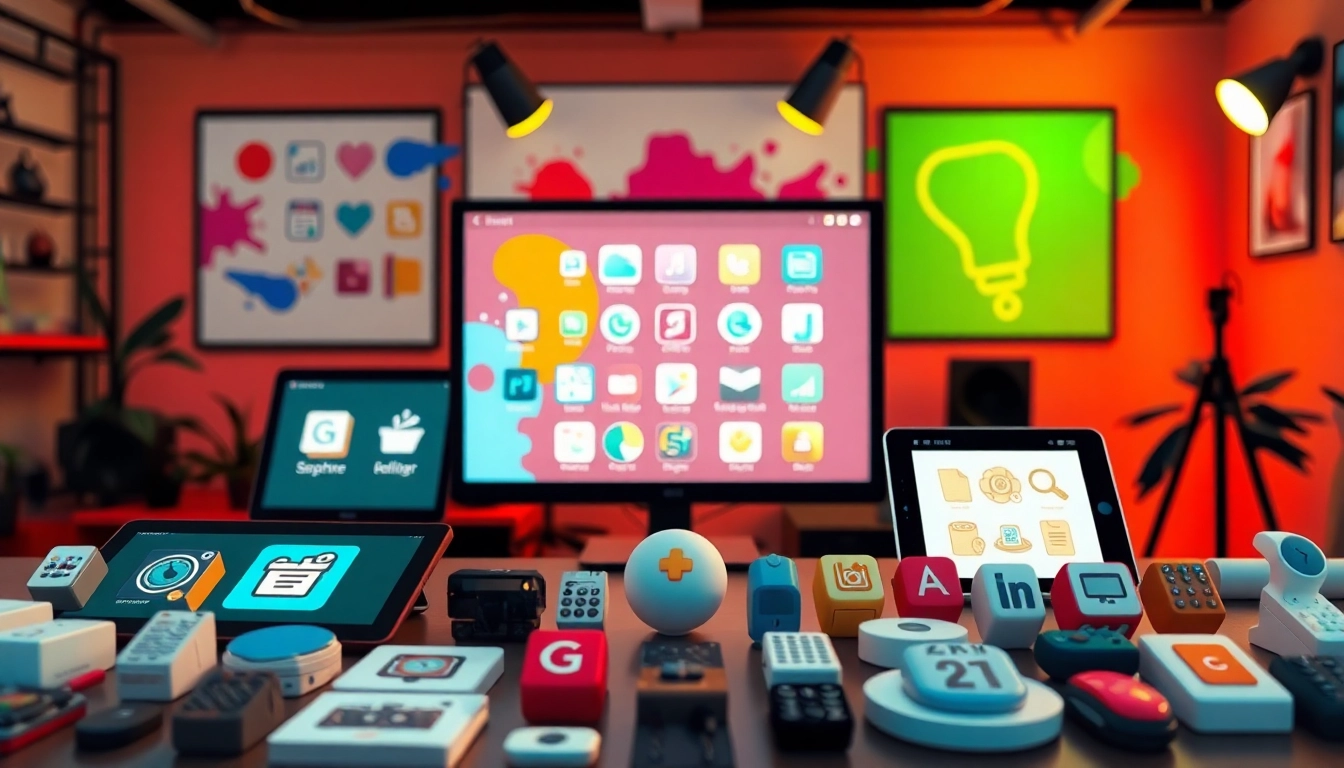Understanding Icons and Their Importance
Defining Icons in Design
Icons are small graphical representations that symbolize a larger idea or concept. They are designed to convey information intuitively without requiring textual explanations. Typically used in digital interfaces, icons can represent actions (like a trash can for deleting), objects (a camera for photo functionality), or concepts (like a heart for favorites). Their design varies widely, from simplistic vector images to more intricate illustrations, depending on the context in which they are used.
The Role of Icons in User Experience
In modern design, icons play a pivotal role in enhancing user experience (UX). They can guide users through applications and websites, facilitating navigation without overwhelming them with text. For instance, a well-placed icon can draw attention to critical actions like ‘buy now’ or ‘download.’ This efficiency not only helps in reducing cognitive load but also speeds up the interaction process. Research has indicated that users are more likely to engage with applications that utilize intuitive iconography, highlighting their significance in digital interactivity.
Common Misconceptions About Icons
Despite their widespread usage, several misconceptions exist regarding icons. One major misconception is that icons can replace all text in a UI. While icons are invaluable in enhancing usability, they should not completely substitute textual information, especially where clarity is crucial. Another misconception involves the idea that all users intuitively understand the meaning behind every icon. Cultural differences and user demographics can affect interpretation, which emphasizes the need for context and clarity in icon design.
The Evolution of Icon Design
Historical Perspectives on Icons
The concept of icons dates back centuries, evolving significantly with technological advancements. In computing, icons emerged in the 1980s with the introduction of graphical user interfaces (GUIs). Early icons were simplistic due to technical limitations, focusing on basic functions. As technology improved, symbols became more intricate and stylized, reflecting not just functionality but also brand identity. The development of vector graphics allowed for greater flexibility and creativity in icon design, paving the way for the diverse visual language we see today.
Modern Trends in Iconography
Contemporary icon design reflects a shift towards minimalism and flat design, where simplicity reigns supreme. The use of bold colors, geometric shapes, and clean lines are prevalent in current trends. Furthermore, there is a growing trend towards animated icons, adding dynamism and engagement to user interfaces. These modern icons often leverage responsive designs, allowing them to adapt aesthetically across various platforms and screen sizes, enhancing usability and aesthetic appeal.
Case Studies of Icon Design Evolution
Several major brands exemplify the evolution of icon design. Take Google, for instance; its icons have transformed from rudimentary symbols to elaborate designs that harmoniously fit within its material design philosophy. Consistency across platforms has been a hallmark of Google’s approach, ensuring users receive the same visual cues no matter where they interact with its services. Similarly, companies like Apple prioritize uniformity in their iconography, understanding that a coherent design language strengthens brand recognition.
Creating Effective Icons
Principles of Icon Design
The effectiveness of icons hinges on several core design principles. First, simplicity is key; an icon should convey its message at a glance. Second, scalability matters; icons must be recognizable at various sizes. Third, consistency is crucial; the design should align with other elements in the interface to avoid cognitive dissonance. Lastly, familiarity enhances usability; using widely accepted symbols increases the likelihood that users will understand their function quickly.
Tools and Software for Icon Creation
Creating effective icons requires the right tools. Popular software includes Adobe Illustrator and Sketch, both of which offer extensive capabilities for vector design. Online platforms like Figma have gained prominence for their collaborative features, allowing designers to work together in real-time. Additionally, icon-specific resources, such as Noun Project and Flaticon, provide a vast repository of pre-designed icons, which can be customized to meet specific needs.
Testing and Evaluating Icon Effectiveness
Testing icons should involve user feedback to determine if they communicate their intended messages. A/B testing can be particularly useful, allowing designers to compare user interactions with different icon designs. Metrics such as click-through rates and task completion times can provide insights into the effectiveness of an icon in guiding user behavior. Surveys and heat maps can further reveal user perceptions and interactions, enhancing design iterations.
Integrating Icons into Your Brand
Brand Consistency Through Iconography
Icons are instrumental in reinforcing brand identity. They should reflect the brand’s visual language and ethos, ensuring consistency across all marketing channels. For instance, if a brand utilizes specific colors and shapes, its icons should echo these elements to create a coherent aesthetic. This consistency reinforces brand recognition and helps build trust with the audience.
Using Icons in Marketing Materials
In marketing, icons can enhance communication by breaking down complex information into digestible visuals. Infographics, social media posts, and promotional materials often benefit from icons, as they provide an immediate understanding of the content. When used thoughtfully, icons can guide viewers’ attention and emphasize key points, making marketing materials more engaging.
Legal Considerations for Icon Usage
Utilizing icons involves navigating various legal considerations. Copyright issues can arise from using third-party icons without permission, underscoring the need for either original designs or proper licensing agreements. Designers must also be mindful of trademark laws, ensuring that their icons do not infringe on existing trademarks. Understanding these legalities can prevent potential disputes and ensure ethical design practices.
The Future of Icons in Digital Design
Predictions for Icon Design Trends
The future of icon design is poised for exciting developments. As technology evolves, we anticipate a rise in augmented reality (AR) icons that provide interactive experiences. Moreover, generative design tools could revolutionize the way icons are created, allowing designers to explore diverse styles and functionalities with ease. Lastly, we might see a deeper integration of icons with AI technologies, optimizing user interfaces based on data analytics.
Impact of Technology on Iconography
Technological advancements will continue to shape iconography. As software becomes more sophisticated, designers will have access to tools that allow for higher customization and precision in icon design. Additionally, the growing trend of accessibility in design will further influence iconography as designers strive to create icons that are inclusive and usable for a broader audience.
How Icons Will Influence Future User Interfaces
Icons are likely to play an even more critical role in future user interfaces. With increasing amounts of information consumed across devices, intuitive iconography will become essential for enhancing usability. Icons that adapt to user preferences and contextual changes will enrich user experiences, facilitating an interaction that feels seamless and personalized.



